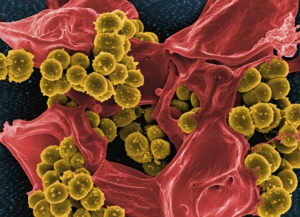
Dipstick test detects Zika
A newly-developed, fast, and cost-effective dipstick test sensitively and specifically identified Zika virus and all four dengue virus subtypes without any detectable cross-reactivity.
The US-Spanish-Colombian-Indian team of developers of the diagnostic said that the test could not only help with clinical diagnoses for Zika, dengue and other closely-related flaviviruses, but also be applied for emerging pathogens.
While both Zika and dengue viruses are transmitted by the same mosquitoes and have similar clinical symptoms, Zika virus alone is linked to severe birth defects. Unlike commercially available diagnostics, the new test developed by Irene Bosch and colleagues distinguished between Zika and dengue viruses without cross-reactivity, and also detected viral proteins at far lower concentrations – between 4 and 21 ng/ml, compared to 75 ng/ml (Science Translational Medicine).
Materials costs for the assay amounted to roughly US$5 per strip, and the scientists speculate that the price will decrease as production is scaled up. The tests detected the virus by sandwiching a viral protein named NS1 between membrane dipsticks coated with one anti-NS1 antibody and gold nanoparticles connected to a different anti-NS1 antibody – causing visible purple spots to appear only if the NS1 protein was present in samples. To identify antibody pairs, Bosch et al. evaluated 300 combinations for Zika virus and 726 combinations for dengue viruses. They further validated that the method was specific to purified viral proteins and serum from patients with confirmed diagnoses. Importantly, the authors note that their design approach was guided by the World Health Organization’s acronym ASSURED, which describes ideal diagnostics: affordable, sensitive, specific, user-friendly, rapid, equipment-free, and delivered to those who need them.
In Science, researchers from University Bejing (China) reported that one single genetic change, likely acquired in 2013, gave the Zika virus the ability to cause severe fetal microcephaly. By comparing contemporary Zika virus strains from the 2015 and 2016 South American epidemics with an ancestral Cambodian virus that was circulating in 2010, Ling Yuan and colleagues homed in on one critical mutation that conferred the ability to cause microcephaly in mouse models of fetal infection. That one change, S139N, which replaced a serine amino acid with an arginine at position 139 of the pathogen’s structural coat protein prM also made the virus more lethal to human neuron precursor cells in culture compared with the ancestral form. Zika virus accumulated numerous changes throughout its genome between 2010 and 2016, which is why the researchers constructed and tested seven different mutant viruses – of all the variants, S139N caused substantially more severe microcephaly and embryonic lethality in mouse models. Evolutionary analyses revealed that the S139N change likely arose sometime around 2013, which coincides with initial reports of microcephaly and Guillain-Barre syndrome.




 Genentech Corp. / Roche
Genentech Corp. / Roche